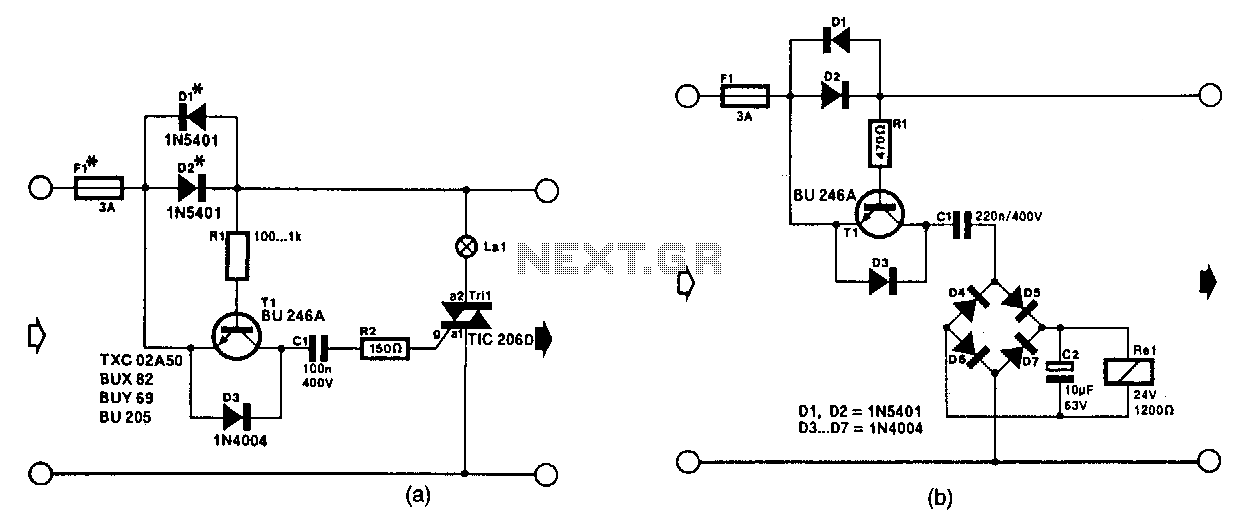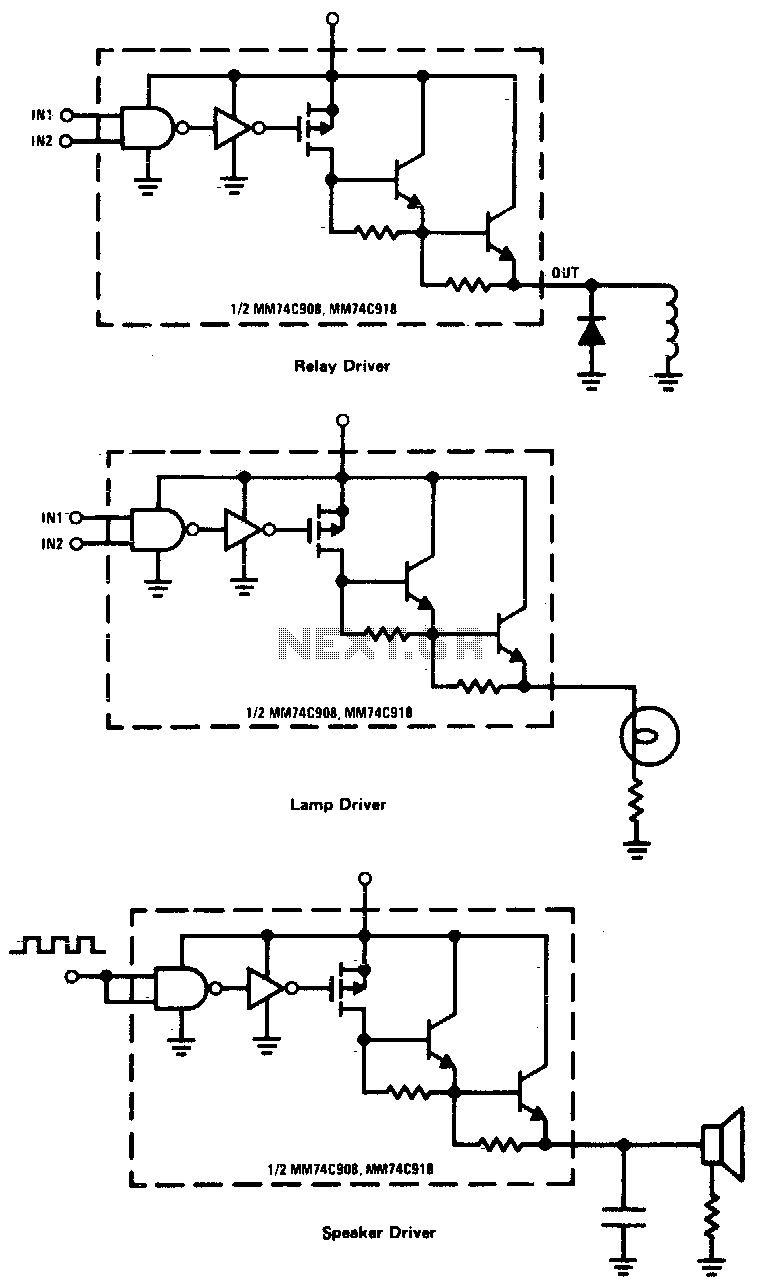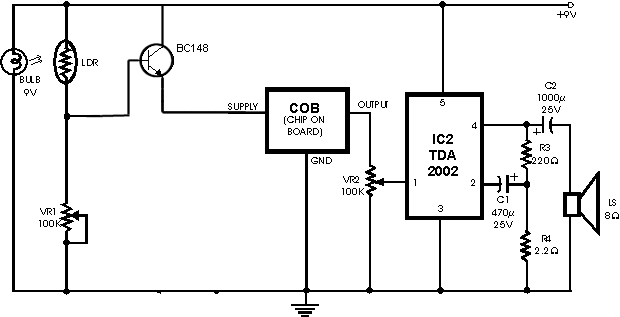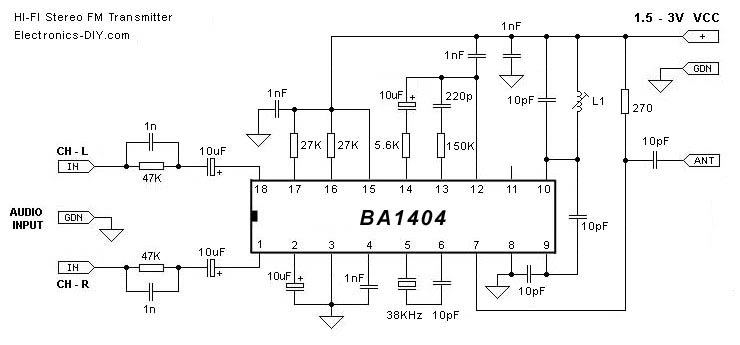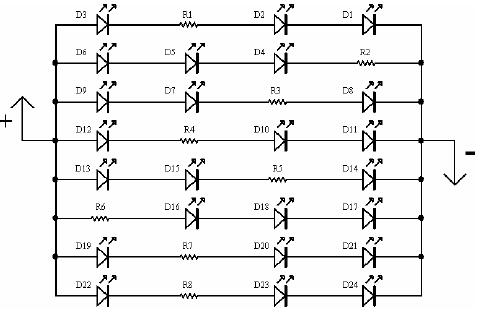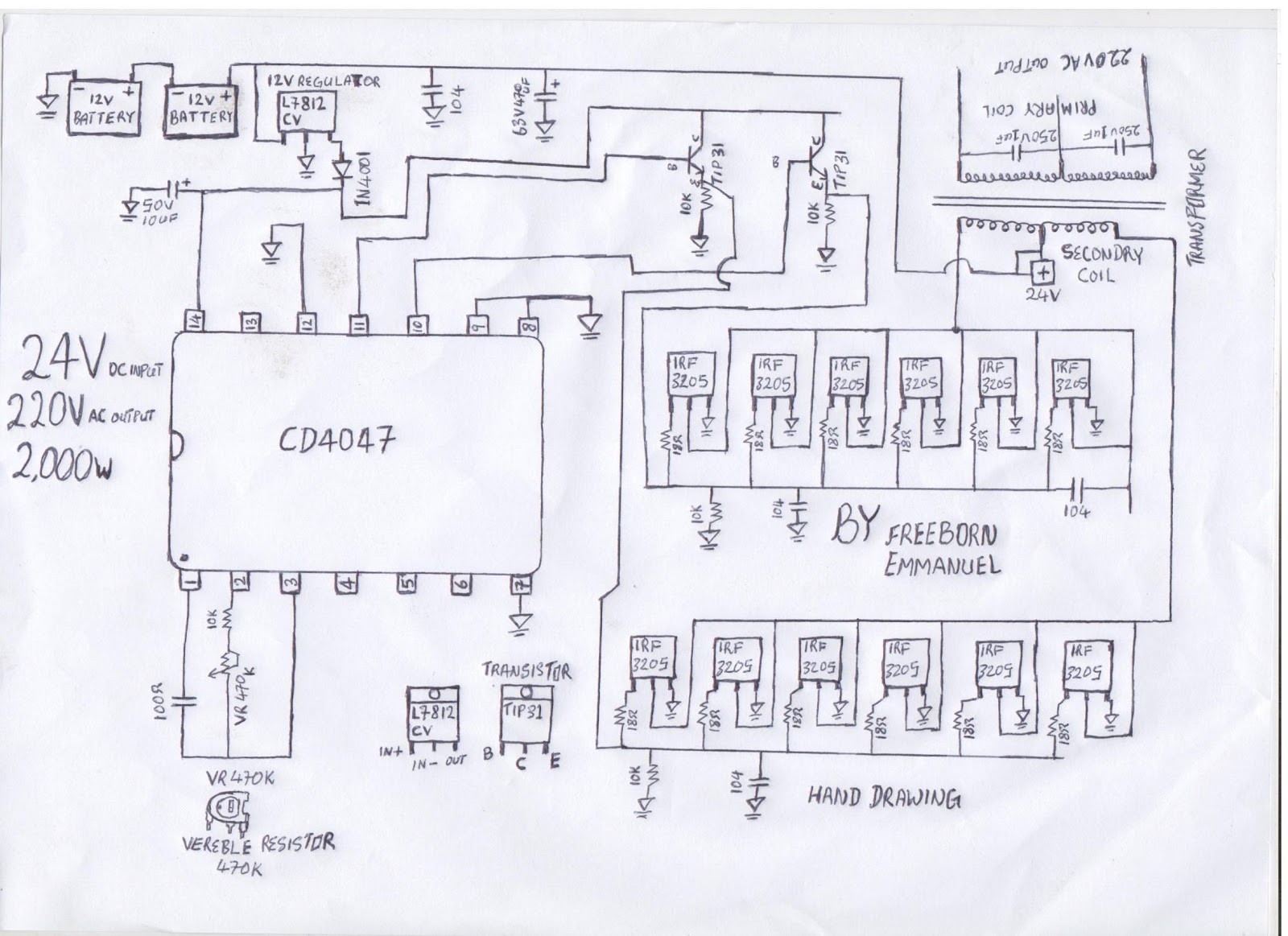
Headlight Alarm Circuit
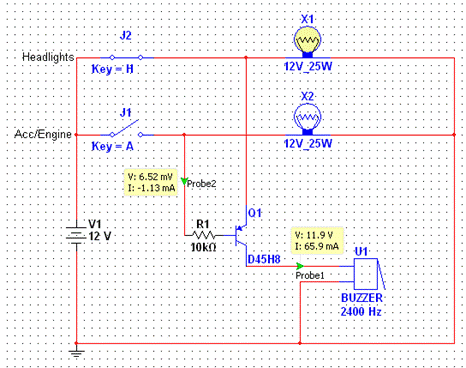
The most extreme option would be to supply power through a battery pack. A more plausible source would be the car's battery. However, since the objective of the circuit is to activate the buzzer when the headlights are on, it is reasonable to draw power from the headlight circuit. To ensure the buzzer sounds when the car is off, two considerations must be addressed. First, a signal source must be identified. In this circuit, an accessory line was selected. This line is grounded when the power is off (car off) and is active otherwise, allowing for a straightforward comparison. The second consideration is determining when the accessory line is low. Initially, a comparator was considered, but it was determined that a PNP transistor would suffice to control the buzzer. In this configuration, the headlight line connects to the emitter, the base connects to the accessory line, and the collector connects to the buzzer. Consequently, when the headlights are on and the accessories are off, the emitter conducts to the collector, activating the buzzer. If the headlights are off or both the accessories and headlights are on, the buzzer remains inactive. Additionally, a resistor is placed between the accessory line and the transistor to limit the current flowing to ground when the buzzer is activated. In the circuit diagram, when the headlights are on and the accessories are off, slightly less than battery voltage is present across the buzzer, with approximately 1mA leaking to ground through the transistor. The transistor selected for this design is rated for significantly higher voltage than the circuit will encounter. While a general-purpose transistor could be used, this choice was made for reliability. After validating the circuit design using Multisim, the next step involved prototyping. The circuit can be constructed, complete with an enclosure, using the following components from Mouser (1 each):
The circuit is designed to operate primarily with low power consumption while ensuring reliable buzzer activation under specified conditions. The PNP transistor serves as a key component for controlling the buzzer based on the state of the accessory line and the headlight circuit. The accessory line, when in an active state, provides a base current to the transistor, allowing it to turn on and connect the collector to the emitter, thus powering the buzzer. The resistor placed in series with the accessory line ensures that the base current does not exceed the maximum rating of the transistor, protecting it from damage.
This circuit can be particularly useful in automotive applications where alerting the driver about the status of the headlights is crucial for safety. The design is straightforward, utilizing commonly available components, which facilitates easy assembly and troubleshooting. The choice of using a PNP transistor allows for efficient operation within the automotive voltage range, which typically spans from 12V to 14.5V in running conditions. Furthermore, the inclusion of a protective resistor ensures that the circuit remains within safe operating parameters, enhancing the longevity of the components involved.
For prototyping, attention should be paid to the layout of the circuit to minimize noise and ensure stable operation. Proper grounding practices should be observed, particularly when dealing with automotive environments where electromagnetic interference can be prevalent. The final assembly should include an enclosure that protects the circuit from environmental factors and mechanical stress, ensuring reliable operation over time.The most outrageous option would be to provide power via a battery pack. A more likely source would be the car`s battery. However, since the circuit`s goal is to sound the buzzer when the headlights are on, we might as well take the power from the headlights. In order to sound the buzzer when the car is off, there are two things to consider. First, a signal source needs to be determined. In the case of my circuit, I chose an accessory line. The accessory line is be grounded when the power is cut (car off) and is otherwise on, so we`ll have an easy comparison. Second is the problem of determining when the accessory line is low. I first considered a comparator, but I soon realized that all I would need is a PNP transistor to switch the buzzer on and off.
With this component, the headlight line is connected to the emitter, the base is connected to the accessory line, and the collector is connected the buzzer. Therefore, when the headlights are on and the accessories are off, the emitter conducts to the collector and the buzzer sounds.
Also with this arrangement, if the headlights are off or the accessories and headlights are on, nothing happens. Additionally a resistor is connected between the accessory line and the transistor to limit the current flowing to ground when the buzzer is sounding.
As you can see in the diagram, the headlights are on and the accessories are off. There is a little less than battery voltage flowing through the buzzer and ~1mA leaking to ground through the transistor. The transistor in the design was chosen specifically since it was rated for much higher voltage than what the circuit will ever see.
It should be possible to use a general purpose transistor, but I did not want to bother with it. After proving the circuit design in Multisim, I moved on to prototyping. This circuit can be built, complete with enclosure, from the following Mouser components (1 each): 🔗 External reference
The circuit is designed to operate primarily with low power consumption while ensuring reliable buzzer activation under specified conditions. The PNP transistor serves as a key component for controlling the buzzer based on the state of the accessory line and the headlight circuit. The accessory line, when in an active state, provides a base current to the transistor, allowing it to turn on and connect the collector to the emitter, thus powering the buzzer. The resistor placed in series with the accessory line ensures that the base current does not exceed the maximum rating of the transistor, protecting it from damage.
This circuit can be particularly useful in automotive applications where alerting the driver about the status of the headlights is crucial for safety. The design is straightforward, utilizing commonly available components, which facilitates easy assembly and troubleshooting. The choice of using a PNP transistor allows for efficient operation within the automotive voltage range, which typically spans from 12V to 14.5V in running conditions. Furthermore, the inclusion of a protective resistor ensures that the circuit remains within safe operating parameters, enhancing the longevity of the components involved.
For prototyping, attention should be paid to the layout of the circuit to minimize noise and ensure stable operation. Proper grounding practices should be observed, particularly when dealing with automotive environments where electromagnetic interference can be prevalent. The final assembly should include an enclosure that protects the circuit from environmental factors and mechanical stress, ensuring reliable operation over time.The most outrageous option would be to provide power via a battery pack. A more likely source would be the car`s battery. However, since the circuit`s goal is to sound the buzzer when the headlights are on, we might as well take the power from the headlights. In order to sound the buzzer when the car is off, there are two things to consider. First, a signal source needs to be determined. In the case of my circuit, I chose an accessory line. The accessory line is be grounded when the power is cut (car off) and is otherwise on, so we`ll have an easy comparison. Second is the problem of determining when the accessory line is low. I first considered a comparator, but I soon realized that all I would need is a PNP transistor to switch the buzzer on and off.
With this component, the headlight line is connected to the emitter, the base is connected to the accessory line, and the collector is connected the buzzer. Therefore, when the headlights are on and the accessories are off, the emitter conducts to the collector and the buzzer sounds.
Also with this arrangement, if the headlights are off or the accessories and headlights are on, nothing happens. Additionally a resistor is connected between the accessory line and the transistor to limit the current flowing to ground when the buzzer is sounding.
As you can see in the diagram, the headlights are on and the accessories are off. There is a little less than battery voltage flowing through the buzzer and ~1mA leaking to ground through the transistor. The transistor in the design was chosen specifically since it was rated for much higher voltage than what the circuit will ever see.
It should be possible to use a general purpose transistor, but I did not want to bother with it. After proving the circuit design in Multisim, I moved on to prototyping. This circuit can be built, complete with enclosure, from the following Mouser components (1 each): 🔗 External reference
Warning: include(partials/cookie-banner.php): Failed to open stream: Permission denied in /var/www/html/nextgr/view-circuit.php on line 713
Warning: include(): Failed opening 'partials/cookie-banner.php' for inclusion (include_path='.:/usr/share/php') in /var/www/html/nextgr/view-circuit.php on line 713
